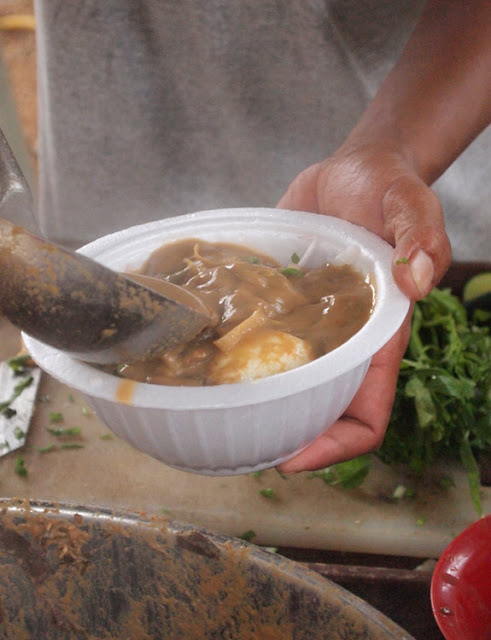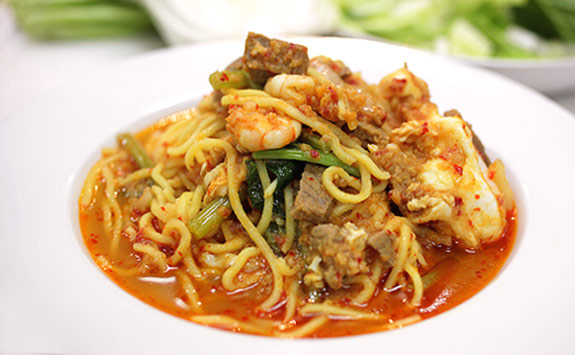With snow possible today in Minnesota, we are definitely in the mood for soup as well. One that’s a little spicy and salty, but healthy & hearty too. So we used our new Spicy Korean Chili Seasoning in this Japanese-inspired Miso Udon Noodle Soup.
Miso – the beloved and versatile Japanese ingredient, generally made from fermented soy beans – makes a sensational, vegetarian soup broth that matches well with udon noodles, silken tofu, mushrooms, and a handful of greens. To give this Miso Udon Noodle Soup a final Japanese touch, top with scallions and nori.
This base soup makes a nourishing meal on a chilly day, but to really warm up, try it with our Spicy Korean Chili Seasoning. Mix the seasoning with toasted sesame oil and add it into the soup. Or use it as a dipping sauce for the tofu and mushrooms.
Ingredients:
2 servings of udon noodles
3 1/2 cups of water
4-5 shiitake or baby bella mushrooms – thinly sliced
silken tofu – cubed
3 1/2 tbsp of miso paste
1 bunch of spinach or bok choy
Nori sheet – cut into strips
4 scallions – thinly sliced
Dressing:
1 tbsp of Season with Spice’s Spicy Korean Chili Seasoning
Toasted sesame oil - to form seasoning into a paste (you can add more for additional flavor)
Method:
1. In a soup pot, bring water to a boil and cook udon according to package instructions. Drain and divide into your serving bowls.
2. While the noodles are cooking, whisk together our Spicy Korean Chili Seasoning with toasted sesame oil in a small bowl.
3. Using the same soup pot, add 3 1/2 cups of water and bring to a boil. Add mushrooms and cook for 2-3 minutes until mushrooms are tender. Add in the tofu and cook for another minute.
4. Divide the mushrooms & tofu between the two serving bowls (but leave the water in the pot)
.
5. Keep the soup at a steady rolling boil. Place spinach or bok choy onto a slotted spoon and blanch quickly, just until the vegetables begin to wilt. Then divide the greens into the two serving bowls.
6. Turn heat off, then gently add in the miso paste. Stir well until completely dissolved. Taste and add in a bit more miso paste or water to your liking.
7. Lastly, ladle the hot soup into each bowl. Top with nori sheets and scallions. Serve together with the Spicy Korean Chili Dressing.
Notes:
1. You can definitely add in some other vegetables as well. Try carrots, wakame seaweed, napa cabbage or pickled bamboo shoots.
2. You can either serve the dressing separately in a sauce dish for dipping, or add the dressing directly into the soup after dissolving the miso paste.
3. To preserve the health benefits and flavor of miso, it's important not to boil it. Make sure to turn the fire off before adding in the miso paste.
[via]

























































